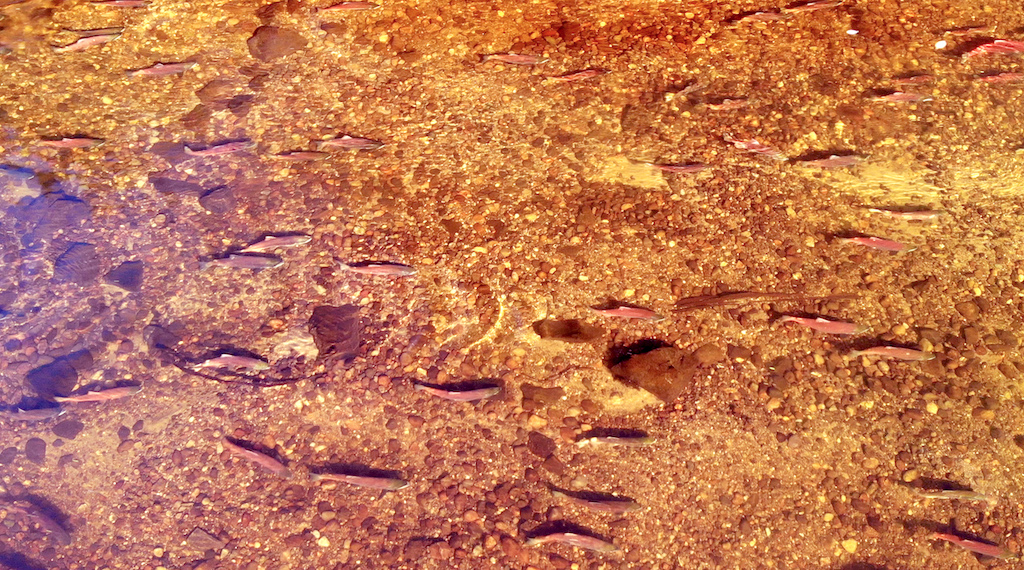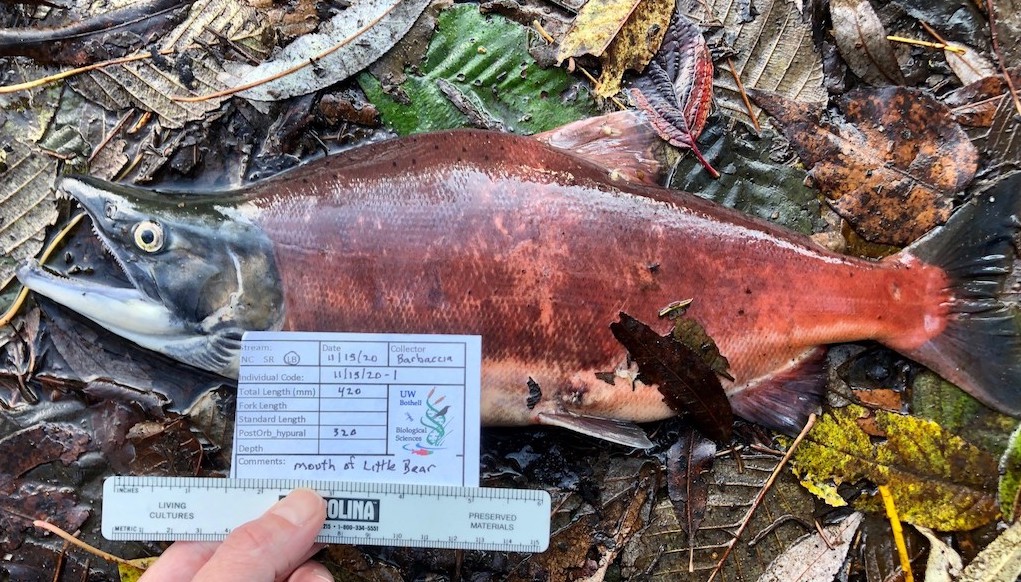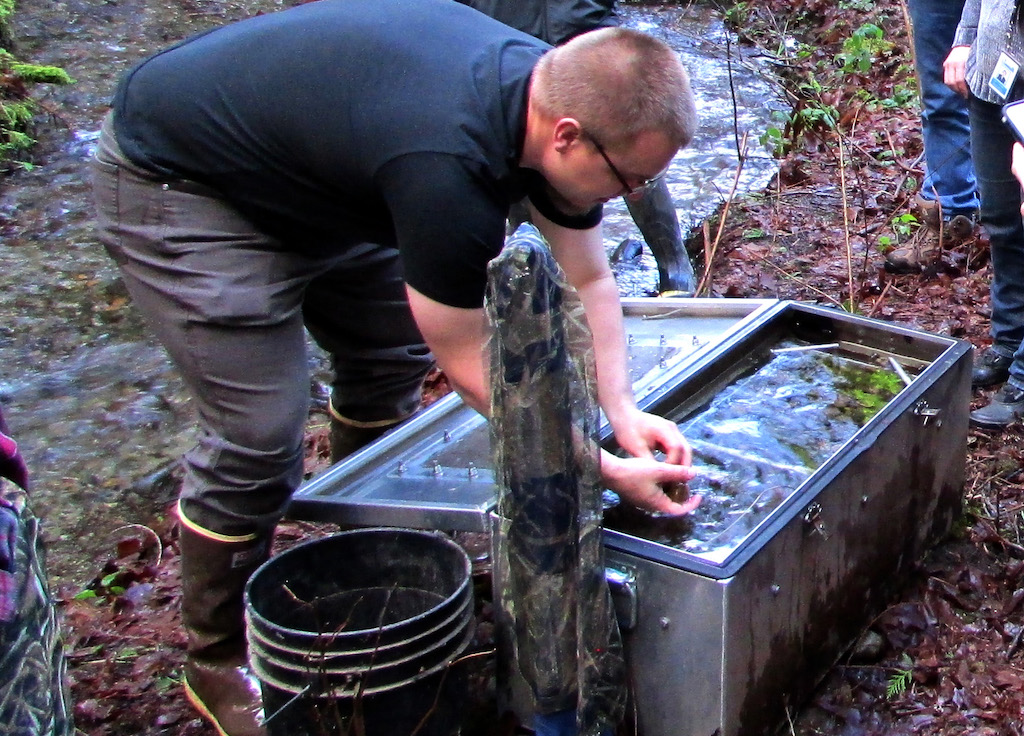Not only were these kokanee biologically unusual, they also tasted different. In her ethnographic study The Puyallup-Nisqually, Marian Smith wrote that the people who lived around the lake “were said to prefer this salmon [kokanee] to that which entered the rivers from the Sound.” In addition, by returning to their birth streams late in the year after the run of other salmon species, the kokanee were an important food source for Indigenous people around the lake. Early accounts by settlers and biologists also referenced the kokanee’s flavor and abundance.
The local kokanee eventually evolved three distinct groups: a late run still found in a few tributaries in Lake Sammamish and early and middle runs, both of which were thought to no longer exist. (A coalition of groups, in particular the Snoqualmie Tribe, whose people know the fish by its Lushootseed name sʔilas, or “little red fish,” are working to restore the Lake Sammamish runs.) Jensen thought that the fish he saw in 2017 could be the middle run kokanee; he also knew that fisheries biologists had made a similar observation in 2011.
Biologists are not certain about what led to the decline of kokanee but habitat loss, pollutants, and the construction of the Lake Washington Ship Canal and Locks are all thought to play a roll. Nor did the kokanee benefit from the introduction of sockeye, Chinook, and steelhead beginning in the 1920s. An additional challenge for biologists was the presence of what they called residual sockeye. The offspring of ocean-going sockeye, they spent their entire lives in fresh water, returning to the spawning grounds as kokanee look-alikes. When Jensen found his kokanee, he wondered if they were these residual sockeye, a new hybrid kokanee/hybrid, or native kokanee that escaped previous observation.
With funding from Trout Unlimited and in collaboration with the Washington Department of Fish and Wildlife Molecular Genetics lab, Jensen ran DNA tests comparing kokanee samples he collected in 2017, along with a subsequent run in 2020, with kokanee and sockeye populations from around the Pacific Northwest. The Lake Washington kokanee were most similar to, but still genetically distinct from, the native Lake Sammamish “late” run kokanee. Jensen’s mystery fish appeared to be true native Lake Washington kokanee.
(Because a small chance exists that they aren’t, Jensen hopes to run DNA tests on kokanee collected by late 19th-century University of Washington natural science professor Orson Bennett Johnson. Unfortunately, he hasn’t been able to obtain usable DNA from the fish, which Johnson collected from a small tributary of Lake Washington in November 1888 and October 1889, or about the same time of year that Jensen first saw his kokanee.)




